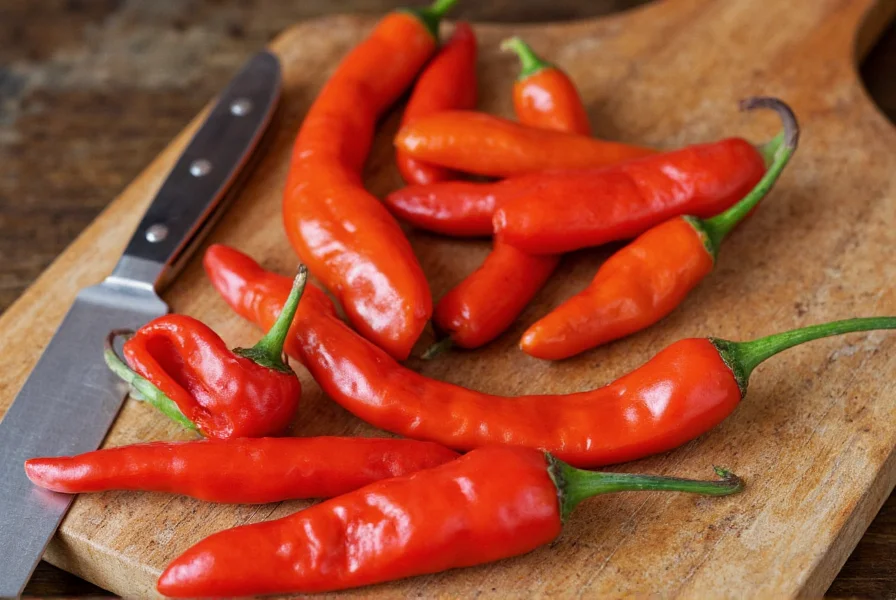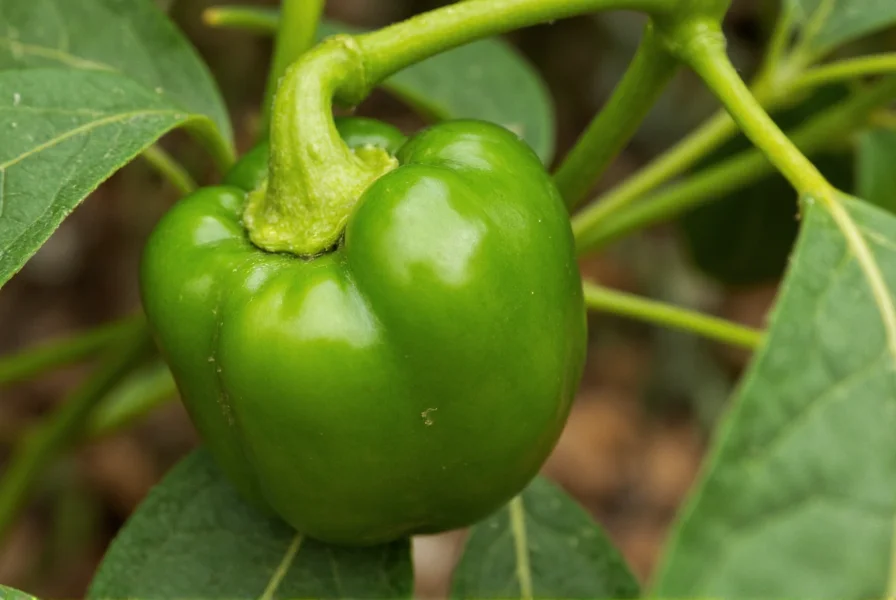Understanding the chilaca pepper begins with recognizing its dual identity in Mexican cuisine. This versatile chili exists in two distinct forms: fresh as chilaca and dried as ancho. While often confused with similar varieties, the chilaca maintains unique characteristics that make it valuable for specific culinary applications.
Physical Characteristics and Heat Profile
Chilaca peppers typically measure 6-7 inches in length with a slender, curved shape that tapers to a point. When immature, they appear bright green, darkening to a deep forest green as they mature. The skin has a slightly wrinkled texture compared to smoother bell peppers.
| Characteristic | Details |
|---|---|
| Scoville Heat Units | 1,000-2,500 SHU (mild to medium) |
| Flavor Profile | Earthy with subtle berry notes, mild bitterness, and tea-like undertones |
| Maturation Process | Green when fresh, turns deep reddish-brown when dried |
| Common Confusions | Often mistaken for pasilla peppers (which are actually dried chilacas) |
Chilaca vs. Ancho: Understanding the Transformation
One of the most frequent points of confusion involves the relationship between fresh chilacas and dried anchos. When chilaca peppers are harvested and dried, they become what's known as ancho peppers. This transformation significantly alters both flavor and culinary applications:
- Fresh chilaca: Bright, grassy notes with mild heat; ideal for salsas verdes and fresh preparations
- Dried ancho: Rich, complex flavor with notes of dried fruit, coffee, and chocolate; perfect for moles and slow-cooked dishes
This distinction explains why many "chilaca pepper" searches yield information about anchos—the same pepper at different stages. When seeking authentic chilaca pepper recipes, ensure you're using the appropriate form for the dish.

Culinary Applications of Fresh Chilaca Peppers
Chefs value chilaca peppers for their balanced heat and distinctive flavor that enhances rather than overwhelms dishes. Unlike hotter varieties that dominate a recipe, chilacas provide subtle warmth while contributing complex flavor notes.
Traditional Mexican preparations featuring fresh chilacas include:
- Mole verde: The earthy notes complement tomatillos and pumpkin seeds
- Salsa de chilaca: Blended with cilantro, garlic, and lime for a versatile table salsa
- Stuffed peppers: Combined with cheese or meat fillings for chiles rellenos
- Bean dishes: Simmered whole in frijoles for subtle heat infusion
When cooking with fresh chilacas, remember that heat concentrates in the seeds and membranes. For milder dishes, remove these elements before chopping. The thin skin requires minimal preparation compared to thicker-skinned varieties like poblanos.
Finding and Substituting Chilaca Peppers
Locating fresh chilaca peppers can be challenging outside Mexico and border regions. Specialty Mexican markets represent the most reliable source, particularly during summer and early fall harvest seasons. When unavailable, consider these substitution options based on your culinary needs:
- For fresh applications: Poblano peppers (milder heat) or serranos (hotter)
- For dried applications: Ancho peppers (same pepper dried) or guajillo
- For flavor profile: A combination of bell pepper and mild chili powder
Understanding chilaca pepper substitutes requires matching both heat level and flavor characteristics. The unique berry notes of chilacas make perfect substitution difficult, but adjusting other ingredients can compensate for flavor differences.

Growing and Preserving Chilaca Peppers
Gardeners interested in cultivating chilaca peppers should note they require 80-90 days to maturity with consistent warmth. These plants thrive in well-drained soil with full sun exposure. Unlike some chili varieties, chilacas produce abundantly when properly cared for.
Preservation methods vary based on intended use:
- Freezing: Blanch whole peppers before freezing for up to 6 months
- Drying: Transform into anchos by air-drying or using a food dehydrator
- Pickling: Preserve in vinegar with spices for tangy condiments
- Roasting and freezing: Roast, peel, and freeze for ready-to-use peppers
Properly stored dried chilacas (anchos) maintain quality for 6-12 months in airtight containers away from light and moisture. The flavor intensifies slightly during the first few months of storage before gradually diminishing.
Common Questions About Chilaca Peppers
What's the difference between chilaca and pasilla peppers?
Chilaca is the fresh form of the pepper, while pasilla refers specifically to the dried chilaca. Many grocery stores incorrectly label fresh chilacas as "pasilla" peppers, creating widespread confusion. True pasilla means "little raisin" in Spanish and describes the dried pepper's appearance and flavor.
How hot are chilaca peppers compared to jalapeños?
Chilaca peppers range from 1,000-2,500 Scoville Heat Units (SHU), making them significantly milder than jalapeños, which typically measure 2,500-8,000 SHU. Most chilacas fall at the lower end of their heat range, providing gentle warmth without overwhelming heat that allows their complex flavor to shine through.
Can I use dried chilaca peppers interchangeably with fresh?
No, fresh and dried chilaca peppers (anchos) have significantly different flavor profiles and culinary applications. Fresh chilacas work best in salsas and quick-cooking dishes, while dried anchos excel in slow-simmered sauces and moles. Substituting one for the other requires recipe adjustments to account for the concentrated flavor and different texture of the dried form.
What dishes showcase chilaca peppers best?
Traditional Mexican mole verde highlights fresh chilaca peppers' unique flavor. Other excellent applications include salsa de chilaca (blended with tomatillos and cilantro), chiles rellenos, and as a subtle heat component in bean dishes. When dried into anchos, they become essential for authentic mole poblano and adobo sauces where their complex fruit notes shine.
How do I properly store fresh chilaca peppers?
Store fresh chilaca peppers in the crisper drawer of your refrigerator for up to two weeks. For longer storage, roast and freeze them (up to 6 months) or dry them to transform into anchos. Avoid washing until ready to use, as moisture accelerates spoilage. Never store chilacas at room temperature for extended periods, as they lose quality rapidly.











 浙公网安备
33010002000092号
浙公网安备
33010002000092号 浙B2-20120091-4
浙B2-20120091-4